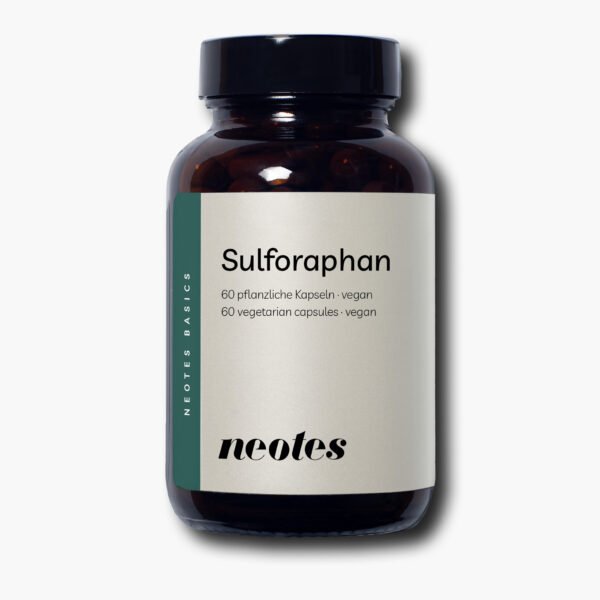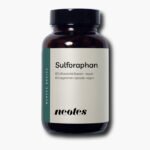NATURAL SUPPORT
Sulforaphane capsules
neotes Sulforaphane provides a high dose of 600 mg broccoli extract, of which 60 mg sulforaphane per daily dose.
- With 60 capsules, each jar of sulforaphane provides optimum support for 30 days.
- Vegan, GMO-free and without additives.
from 14,00 €
- Delivered in
- plus. Shipping
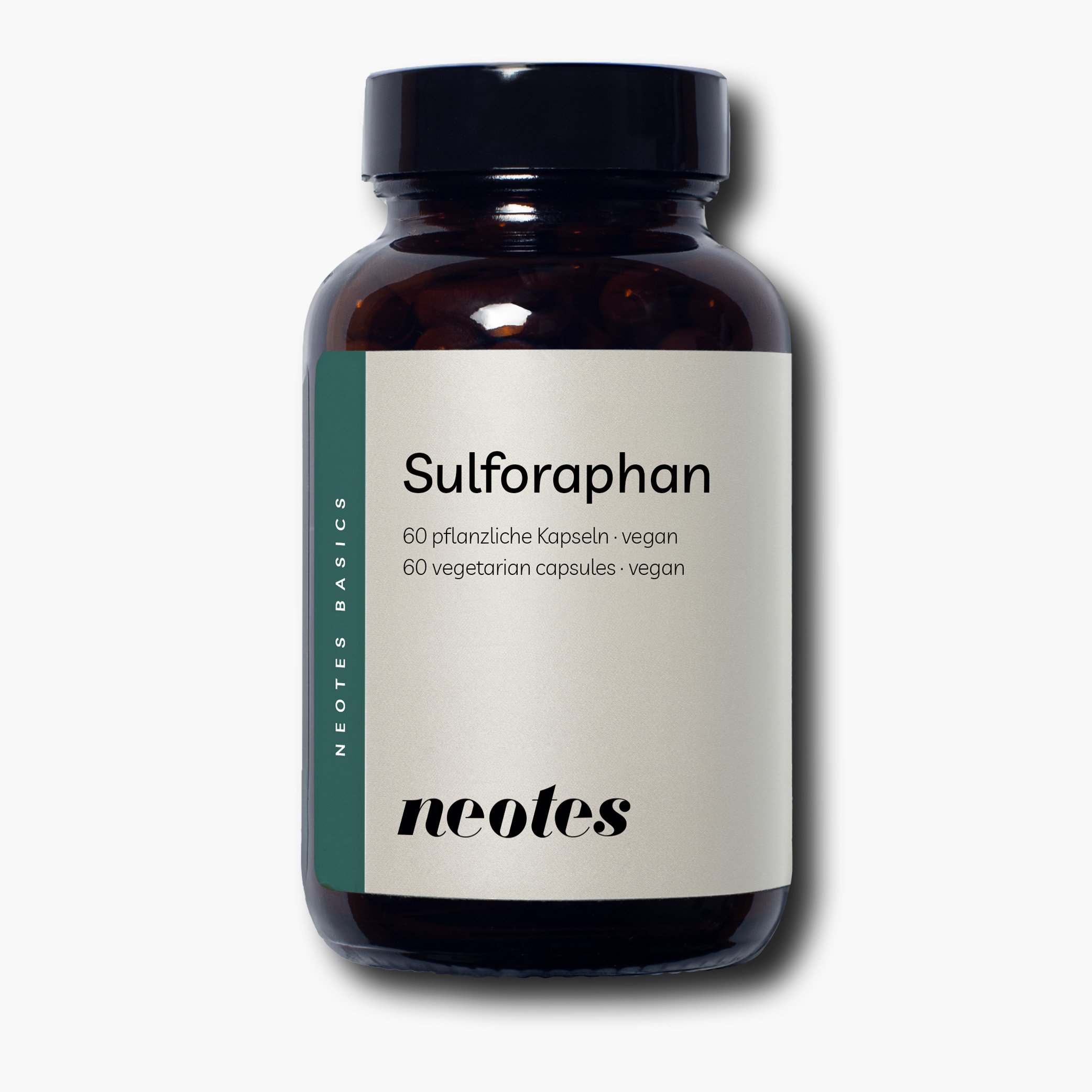
You have taken a step towards healthy ageing. Discover our other Longevity products now.

- Sulforaphane, a naturally occurring chemical derivative of glucoraphanin, is found in many cruciferous vegetables such as broccoli, cabbage, Brussels sprouts and radishes.
- The absorption of sulforaphane from cabbage varieties is difficult for humans as it is bound to sugar as glucoraphanin. Sulforaphane is only produced when the mustard oil glycoside glucoraphanin is broken down by the enzyme myrosinase.
- Broccoli extract is obtained from the seeds of broccoli.
- Gluten-free and suitable for vegans.

neotes Sulforaphane
- Selected by scientists with many years of expertise
- Highly dosed ingredients
- Fast delivery and reliable customer service
- Free telephone consultation to get started on the Longevity Journey
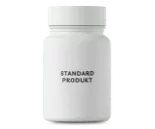
- Lack of scientific background
- Often low dosage of the active ingredient
- Longer delivery times with hard-to-reach customer service
- No expert telephone advice
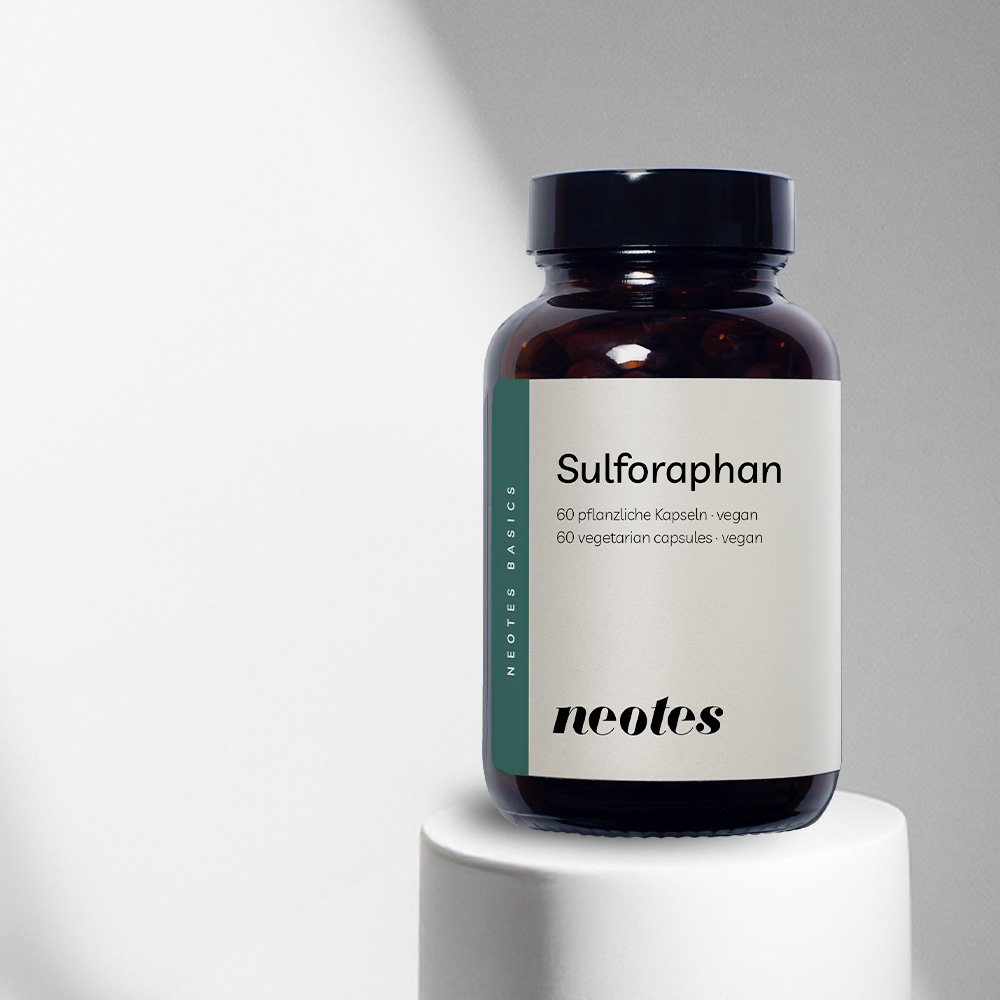
Our aim is to offer first-class and carefully selected diagnostics, micronutrients and consultations aimed at a long-term health span.
The neotes Basics are specially developed for those who value well-known and proven ingredients. Our Basics series also includes our high-quality sulforaphane capsules. These are characterized by a pure and simple formulation that focuses on the essentials.
Our sulforaphane capsules have a brownish color. Sulforaphane has a slightly bitter taste in powder form, but this is hardly noticeable when mixed with other foods or drinks. Sulforaphane powder is hygroscopic, i.e. it attracts moisture from the environment. It should therefore be stored in well-sealed packaging to preserve its quality and effectiveness. Our sulforaphane capsules come in a resealable jar that protects the product from moisture and light.
The capsule shell consists of hydroxypropyl methylcellulose, a vegetable cellulose. This type of capsule shell has no influence on the taste or effectiveness of sulforaphane and is therefore particularly suitable for food supplements.
The capsules themselves are smooth and easy to swallow. They are designed to dissolve in the stomach and release sulforaphane quickly into the digestive system. This ensures optimal bioavailability and utilization of sulforaphane by the body.
Our sulforaphane is available in one pack size. The standard jar with 60 capsules is sufficient for 30 days. If you opt for the bundle, you will receive 3 jars with a total of 180 capsules, which are sufficient for a period of 90 days.
To ensure that you can take your sulforaphane capsules continuously, we recommend that you place your order in good time and allow for our delivery window of 2-3 working days. This way you will receive your capsules on time to take and can continue without interruption.
In capsule form, sulforaphane is usually tasteless, as the capsule shell prevents the taste of the ingredient from being perceived. However, when sulforaphane is taken in powder form, sulforaphane is often described as a little bitter.
However, it is important to mention that the perception of taste can vary from person to person. For those who do not like the taste of sulforaphane in powder form, taking it in capsule form can be a good alternative.
We recommend taking 2 capsules of sulforaphane (600 mg broccoli extract, of which 60 mg sulforaphane) daily in the morning without chewing and with sufficient liquid.
The ideal fluid intake when taking the product may vary from person to person. We recommend a glass of water (250 ml).
The information presented is not intended to be curative or to encourage self-medication. Possible printing and typesetting errors reserved. Status 01.11.2023.
Please consult a doctor or pharmacist before taking food supplements.
The sulforaphane is supplied in a jar that optimally protects the capsules from moisture and light. The jar should always be kept tightly closed and stored in a cool, dry place away from light to preserve the quality of the product
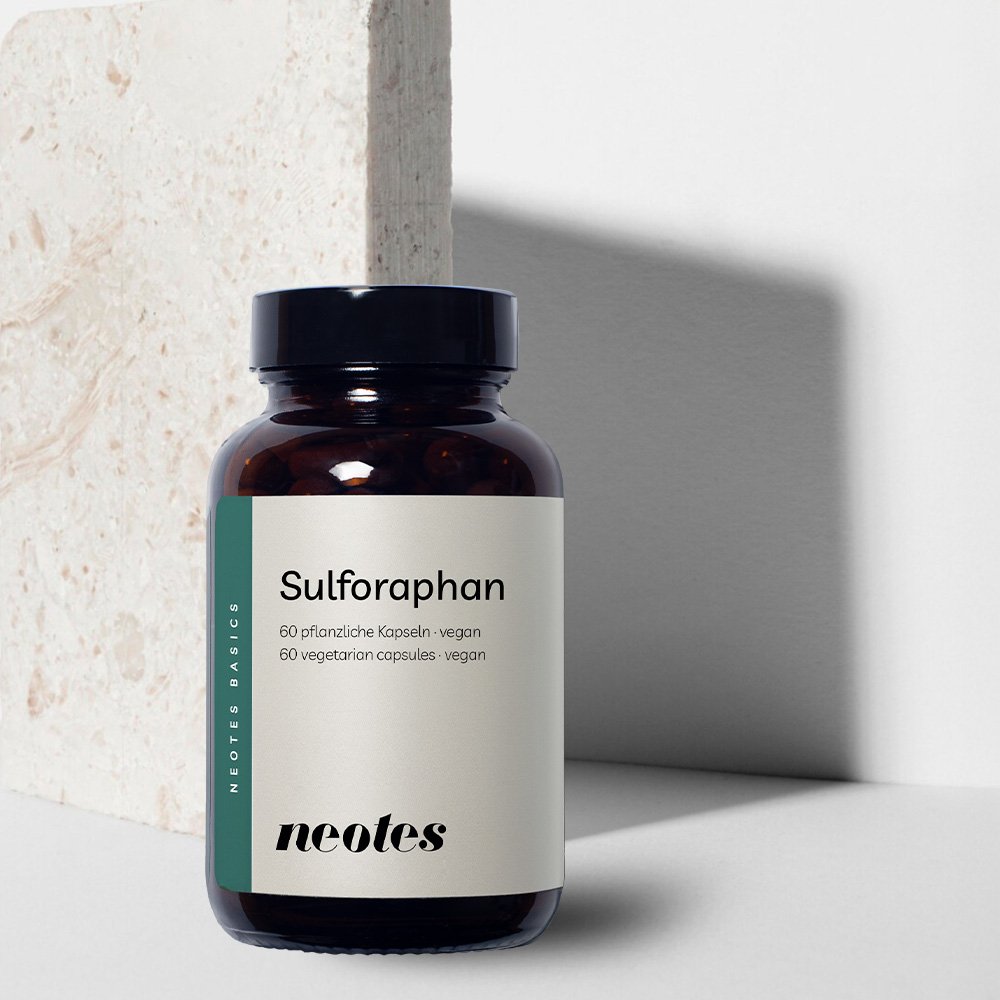
Sulforaphane, a naturally occurring derivative of glucoraphanin, is found in many cruciferous vegetables such as broccoli, cabbage, Brussels sprouts and radishes. It is produced by the reaction of glucoraphanin with an enzyme called myrosinase, which is released when the plant cells are destroyed.
The absorption of sulforaphane from cabbage varieties such as cauliflower or broccoli is difficult for humans as it is bound to sugar as glucoraphanin. Sulforaphane is only produced when the mustard oil glycoside glucoraphanin is broken down by the enzyme myrosinase.
In nature, the plant’s tissue is damaged by predators, which leads to the mustard oil glycoside and myrosinase, which are both stored in different cells, being mixed together. Only then is sulforaphane released. When preparing broccoli for consumption, for example, chopping and slicing broccoli florets triggers this process.
The longer you wait, the more sulforaphane is released as a result. This explains, for example, why grated horseradish is so pungent, whereas raw, cooked radish appears less or hardly pungent.
Broccoli extract is a dietary supplement obtained from the seeds of broccoli.
Broccoli is also known as Italian brassica (Brassica oleracea italica), has its origins in Italy and was already being cultivated in Roman times. It belongs to the cruciferous family (Brassica oleracea) and, like all cruciferous vegetables, is descended from the wild form of the vegetable cabbage. The name broccoli is derived from the Italian word “brocco”, which means “sprout” or “shoot”.
There is evidence that broccoli was already being cultivated 6000 years ago, making it the oldest cultivated vegetable plant. The Romans held broccoli in high esteem and grew it in their gardens. In ancient times, it was believed that broccoli possessed special powers and even today broccoli is still an integral part of the Mediterranean diet.
Broccoli first became popular in Germany in the 1970s and is now very popular due to its mild taste compared to other cruciferous vegetables.

PD Dr. Axel Polack
Senior Scientific Advisory Board・Founder

With neotes, we want to give you back control over your age so that you can achieve everything you set out to do in the next stage of your life.
We dream of a future in which people are healthy and full of energy in the last 10 years of their lives. A future in which age-related illnesses can be avoided. We are committed to this vision.

